ABOUT US
We are security engineers who break bits and tell stories.
Visit us
doyensec.com
Follow us
@doyensec
Engage us
info@doyensec.com
Blog Archive
© 2025 Doyensec LLC 
There is a ton of code that is not worth your time and brain power. Binary reverse engineers commonly skip straight to the important code by using ltrace, strace, or frida. You can do the same for client side JavaScript using only common browser features. This will save time, make testing more fun and help keep your attention span available for the code that deserves your focus.
This blog introduces my thinking processes and practical methods for instrumenting client side JavaScript. This processes have helped me to find deeply embedded bugs in complicated codebases with relative ease. I have been using many of these tricks for so long that I implemented them in a web extension called Eval Villain. While I will introduce you to some of Eval Villain’s brand new features, I will also show how to get the same results without Eval Villain.
Testing an application often raises questions as to how the application works. The client must know the answers to some of these questions if the application is to function. Consider the following questions:
For the web page to work, it needs to know the answer to these questions. This
means we can find our answers in the JavaScript too. Notice that each of these
questions imply the use of particular JavaScript functions. For example, how
would the client implement a post message handler without ever calling
addEventListener? So “Step 1” is hooking these interesting functions,
verifying the use case is what we are interested in and tracing back. In
JavaScript, it would look like this:
(() => {
const orig = window.addEventListener;
window.addEventListener = function(a, b) {
if (a === "message") {
console.log("postMessage handler found");
console.log(b); // You can click the output of this to go directly to the handler
console.trace(); // Find where the handler was registered.
}
return orig(...arguments);
}
})();
Just pasting the above code in the console will work if the handler has not already been registered. However, it is crucial to hook the function before it’s even used. In the next section I will show a simple and practical way to always win that race.
Hooking native JavaScript is “Step 1”. This often helps you find interesting code. Sometimes you will want to instrument that code but it’s non-native. This requires a different method that will be covered in the “Step 2” section.
While you can use one of many web extensions that will add arbitrary JavaScript to the page, I don’t recommend it. These extensions are often buggy, have race conditions and are difficult to develop in. In most cases, I find it easier to just write my own extension. Don’t be daunted, it is really easy. You only need two files and I already made them for you here.
To load the code in Firefox go to about:debugging#/runtime/this-firefox in
the URL bar, click Load Temporary Add-on and navigate to the manifest.json
file in the top directory of the extension.
For chrome, go to chrome://extensions/, enable developer mode in the right
side and click load unpacked.
The extension should show up in the addon list, where you can quickly
enable or disable it. When enabled, the script.js file will load in every web
page. The following lines of code log all input to document.write.
/*********************************************************
*** Your code goes goes here to run in pages scope ***
*********************************************************/
// example code to dump all arguments to document.write
document.write = new Proxy(document.write, {
apply: function(_func, _doc, args) {
console.group(`[**] document.write.apply arguments`);
for (const arg of args) {
console.dir(arg);
}
console.groupEnd();
return Reflect.apply(...arguments);
}
});
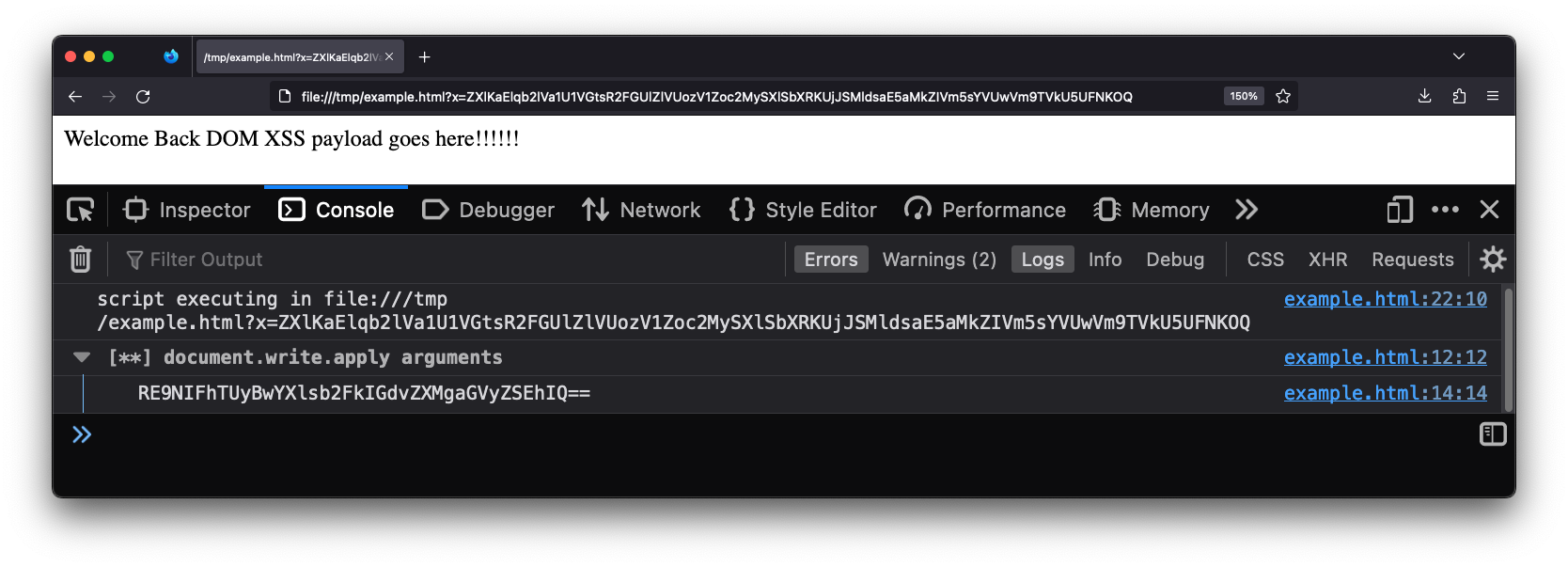
Replace those lines of code with what ever you want. Your code will run in every page and frame before the page has the opportunity to run its own code.
The boiler plate uses the manifest file to register a content script. The manifest tells the browser that the content script should run in every frame and before the page loads. Content scripts do not have direct access to the scope of the page they are loaded into but they do have direct access to the DOM. So the boiler plate code just adds a new script into the pages DOM. A CSP can prohibit this, so the extension checks that it worked. If a CSP does block you, just disable the CSP with browser configs, a web extension or an intercepting proxy.
Notice that the instrumentation code ultimately ends up with the same privileges as the website. So your code will be subject to the same restrictions as the page. Such as the same origin policy.
A quick word of warning. The above content script will give you first access to
the only JavaScript thread. The website itself can’t run any JavaScript until
you give up that thread. Try it out, see if you can make a website that runs
document.write before the boiler plate has it hooked.
First access is a huge advantage, you get to poison the environment that the website is about to use. Don’t give up your advantage until you are done poisoning. This means avoiding the use of async functions.
This is why many web extensions intended to inject user JavaScript into a page are buggy. Retrieving user configuration in a web extension is done using an async call. While the async is looking up the user config, the page is running its code and potentially has already executed the sink you wanted to hook. This is why Eval Villain is only available on Firefox. Firefox has a unique API that can register the content script with the user configuration.
It is very rare that I run into a “Step 1” situation that can’t be solved with Eval Villain. Eval Villain is just a content script that hooks sinks and searches input for sources. You can configure almost any native JavaScript functionality to be a sink. Sources include user configure strings or regular expressions, URL parameters, local storage, cookies, URL fragment and window name. These sources are recursively decoded for important substrings. Let’s look at the same page of the example above, this time with Eval Villain in its default configuration.
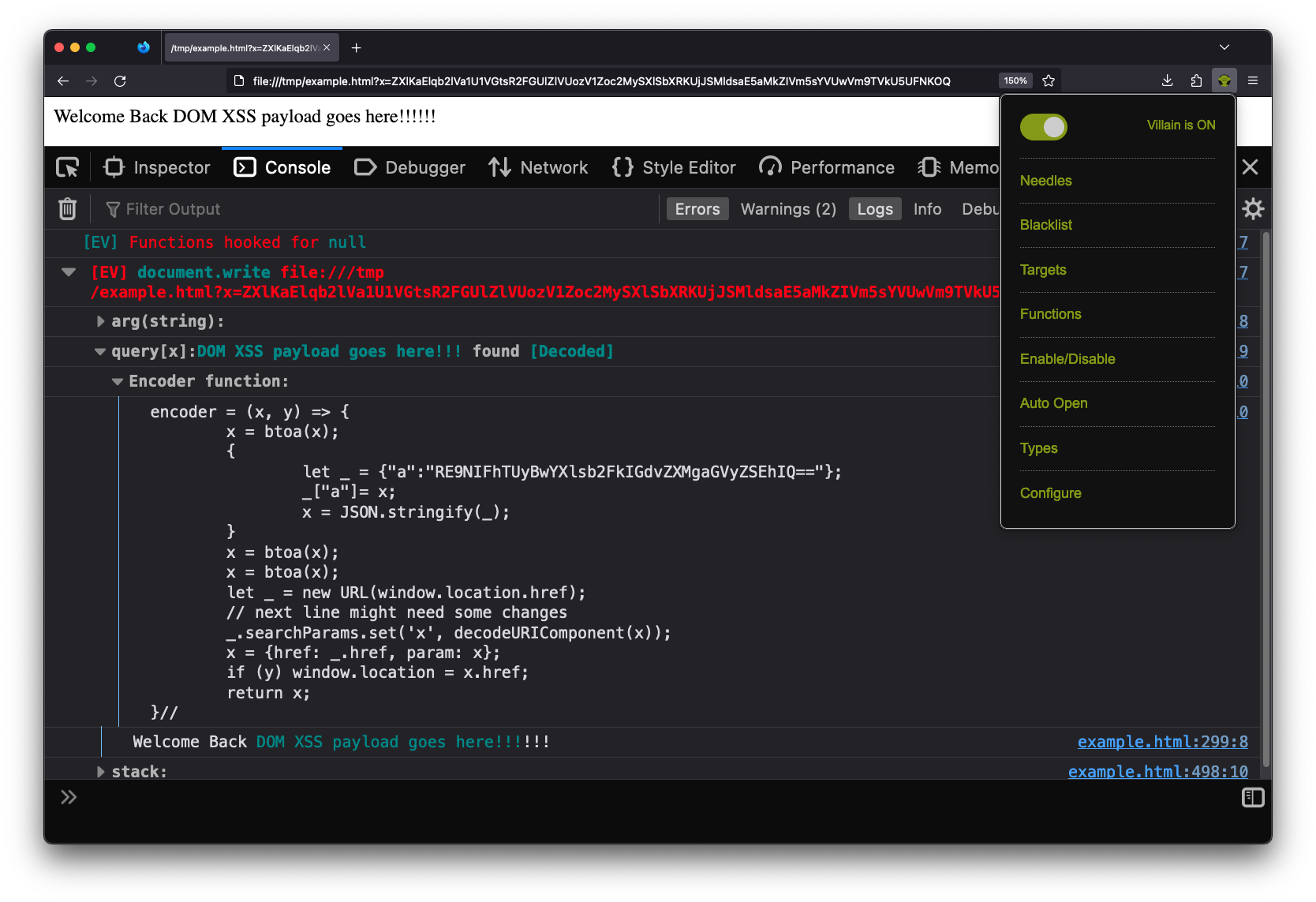
Notice this page is being loaded from a local file://. The source code is
seen below.
<script>
let x = (new URLSearchParams(location.search)).get('x');
x = atob(x);
x = atob(x);
x = JSON.parse(x);
x = x['a'];
x = decodeURI(x);
x = atob(x);
document.write(`Welcome Back ${x}!!!`);
</script>
Even though the page has no web requests, Eval Villain still successfully hooks
the user configured sink document.write before the page uses it. There is no
race condition.
Also notice that Eval Villain is not just displaying the input of
document.write. It correctly highlighted the injection point. The URL
parameter x contained an encoded string that hit the sink document.write.
Eval Villain figured this out by recursively decoding the URL parameters. Since
the parameter was decoded, a encoder function is provided to the user. You
can right click, copy message and paste it into the console. Using the
encoder function lets you quickly try payloads. Below shows the encoder
function being used to inject a marquee tag into the page.
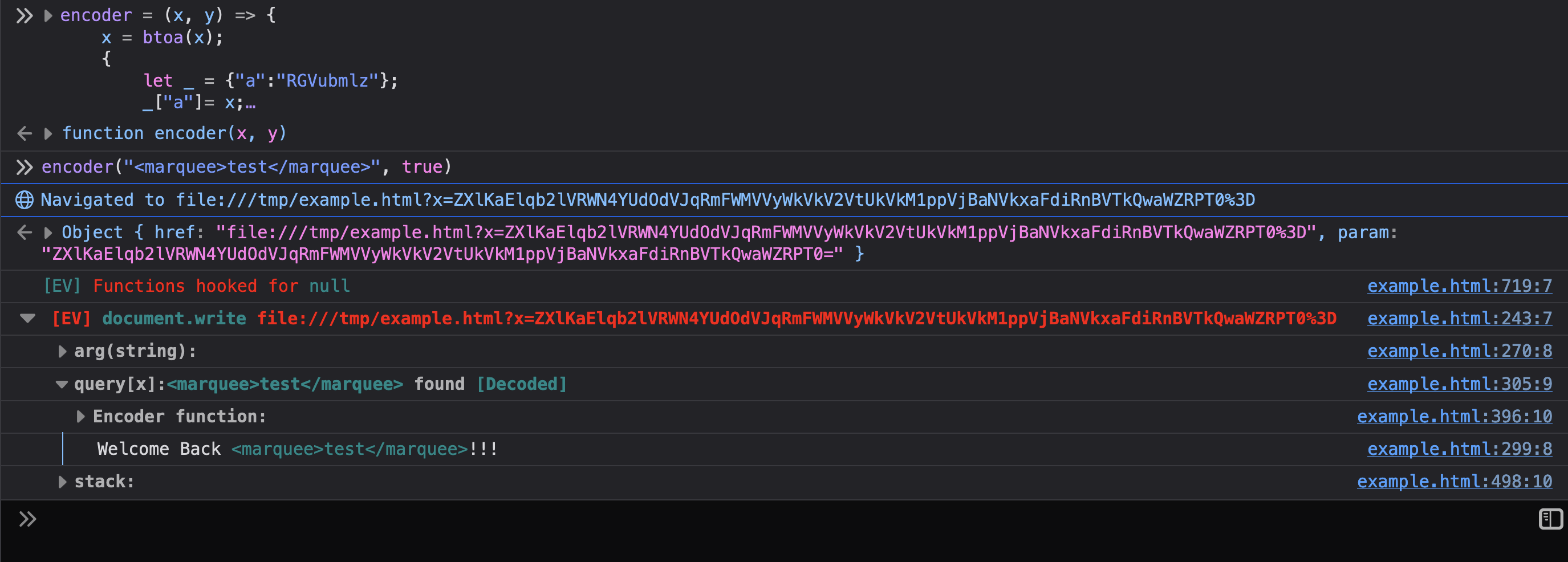
If you read the previous sections, you know how this all works. Eval Villain is just using a content script to inject its JavaScript into a page. Anything it does, you can do in your own content script. Additionally, you can now use Eval Villain’s source code as your boiler plate code and customize its features for your particular technical challenge.
So lets say you used “Step 1” to get a console.trace from an interesting
native function. Maybe a URL parameter hit your decodeURI sink and now your
tracing back to the URL parsing function. There is a mistake I regularly make
in this situation and I want you to do better. When you get a trace, don’t
start reading code yet!
Modern web applications often have polyfills and other cruft at the top of the
console.trace. For example, the stack trace I get on google search results
page starts with functions iAa, ka, c, ng, getAll. Don’t get tunnel
vision and start reading ka when getAll is obviously what you want. When
you look at getAll, don’t read source! Continue to scan, notice that getAll
is a method and it’s sibling are get, set, size, keys, entries and
all the other methods listed in the URLSearchParams
documentation.
We just found multiple custom URL parsers, re-implemented in minified code
without actually reading the code. “Scan” as much as you can, don’t start reading
code deeply until you find the right spot or scanning has failed you.
Instrumenting native code didn’t result in vulnerabilities. Now you want to instrument the non-native implementation itself. Let me illustrate this with an example.
Let’s say you discovered a URL parser function that returns an object named
url_params. This object has all the key value pairs for the URL parameters.
We want to monitor access to that object. Doing so could give us a nice list of
every URL parameter associated to a URL. We may discover new parameters this
way and unlock hidden functionality in the site.
Doing this in JavaScript is not hard. In 16 lines of code we can have a well
organized, unique list of URL parameters associated to the appropriate page and
saved for easy access in localStorage. We just need to figure out how to
paste our code right into the URL parser.
function parseURL() {
// URL parsing code
// url_params = {"key": "value", "q": "bar" ...
// The code you want to add in
url_params = new Proxy(url_params, {
__testit: function(a) {
const loc = 'my_secret_space';
const urls = JSON.parse(localStorage[loc]||"{}");
const href = location.protocol + '//' + location.host + location.pathname;
const s = new Set(urls[href]);
if (!s.has(a)) {
urls[href] = Array.from(s.add(a));
localStorage.setItem(loc, JSON.stringify(urls));
}
},
get: function(a,b,c) {
this.__testit(b);
return Reflect.get(...arguments);
}
};
// End of your code
return url_params;
}
Chrome’s dev tools will let you type your own code into the JavaScript source but I don’t recommend it. At least for me, the added code will disappear on page load. Additionally, it is not easy to manage any instrumentation points this way.
I have a better solution and it’s built into Firefox and Chrome. Take your
instrumentation code, surround it with parenthesis, add && false to
the end. The above code becomes this:
(url_params = new Proxy(url_params, {
__testit: function(a) {
const loc = 'my_secret_space';
const urls = JSON.parse(localStorage[loc]||"{}");
const href = location.protocol + '//' + location.host + location.pathname;
const s = new Set(urls[href]);
if (!s.has(a)) {
urls[href] = Array.from(s.add(a));
localStorage.setItem(loc, JSON.stringify(urls));
}
},
get: function(a,b,c) {
this.__testit(b);
return Reflect.get(...arguments);
}
}) && false
Now right click the line number where you want to add your code, click “conditional breakpoint”.
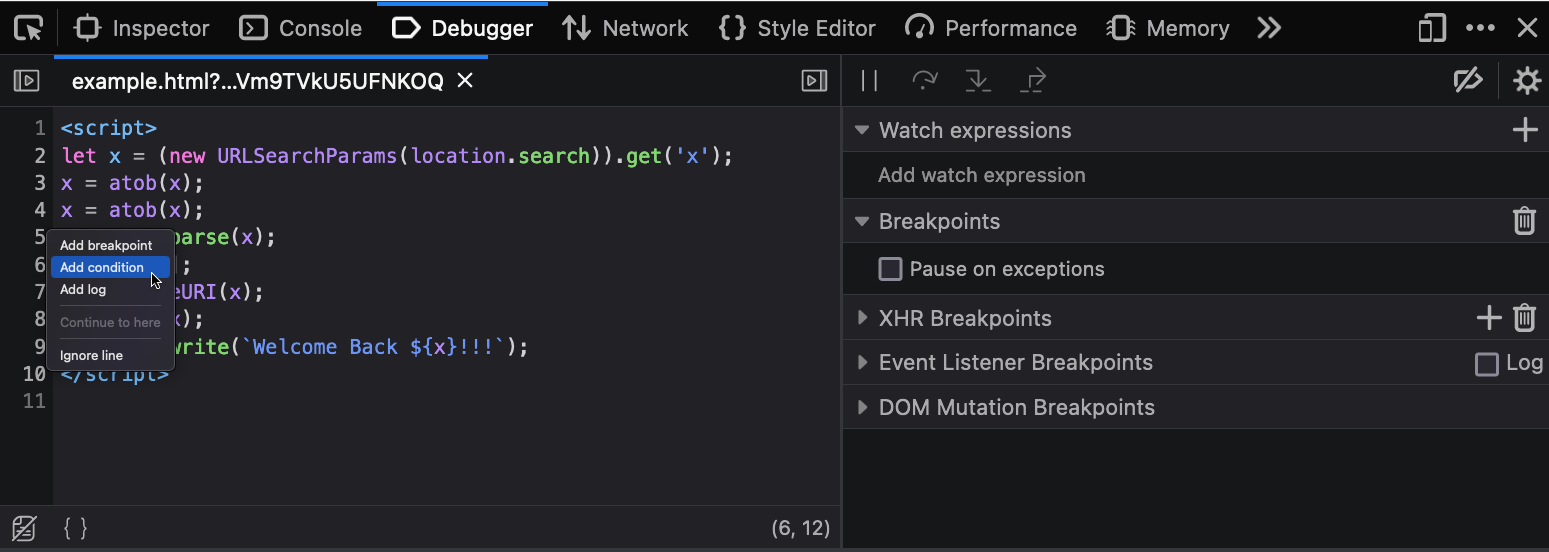
Paste your code in there. Due to the && false the condition will never be
true, so you won’t ever get a breakpoint. The browser will still execute our
code and in the scope of function where we inserted the breakpoint. There are
no race conditions and the breakpoint will continue to live. It will show up in
new tabs when you open the developer tools. You can quickly disable individual
instrumentation scripts by just disabling the assisted breakpoint. Or disable
all of them by disabling breakpoints or closing the developer tools window.
I used this particular example to show just how far you can go. The instrumented code will save URL parameters, per site, to a local storage entry. At any given page you can auto-populate all known URL parameters into the URL bar by pasting the following code in to the console.
(() => {
const url = location.protocol + '//' + location.host + location.pathname;
const params = JSON.parse(localStorage.getItem("my_secret_space"))[url];
location.href = url + '?' + params.flatMap( x => `${x}=${x}`).join('&');
})()
If you use this often, you can even put the code in a bookmarklet.
Nothing says we can’t use native and non-native functions at the same time. You can use a content script to implement big fancy codebases. Export that functionality to the global scope and then use it in a conditional breakpoint.
This brings us to the latest feature of Eval Villain. Your conditional can make use of Eval Villains recursive decoding feature. In the pop-up menu click “configure” and go to the “globals” section. Ensure the “sourcer” line is enabled and click save.
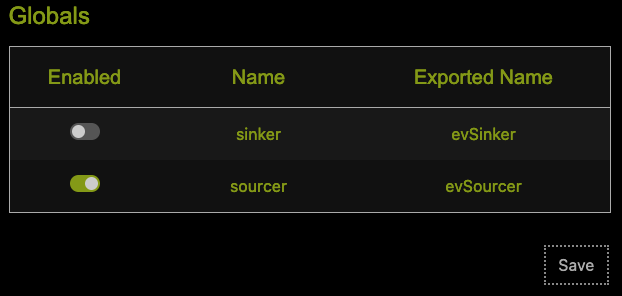
I find myself enabling/disabling this feature often, so there is a second
“enable” flag in the popup menu itself. It’s in the “enable/disable” menu as
“User Sources”. This causes Eval Villain to export the evSourcer function to
the global name scope. This will add any arbitrary object to the list of
recursively decoded sources.
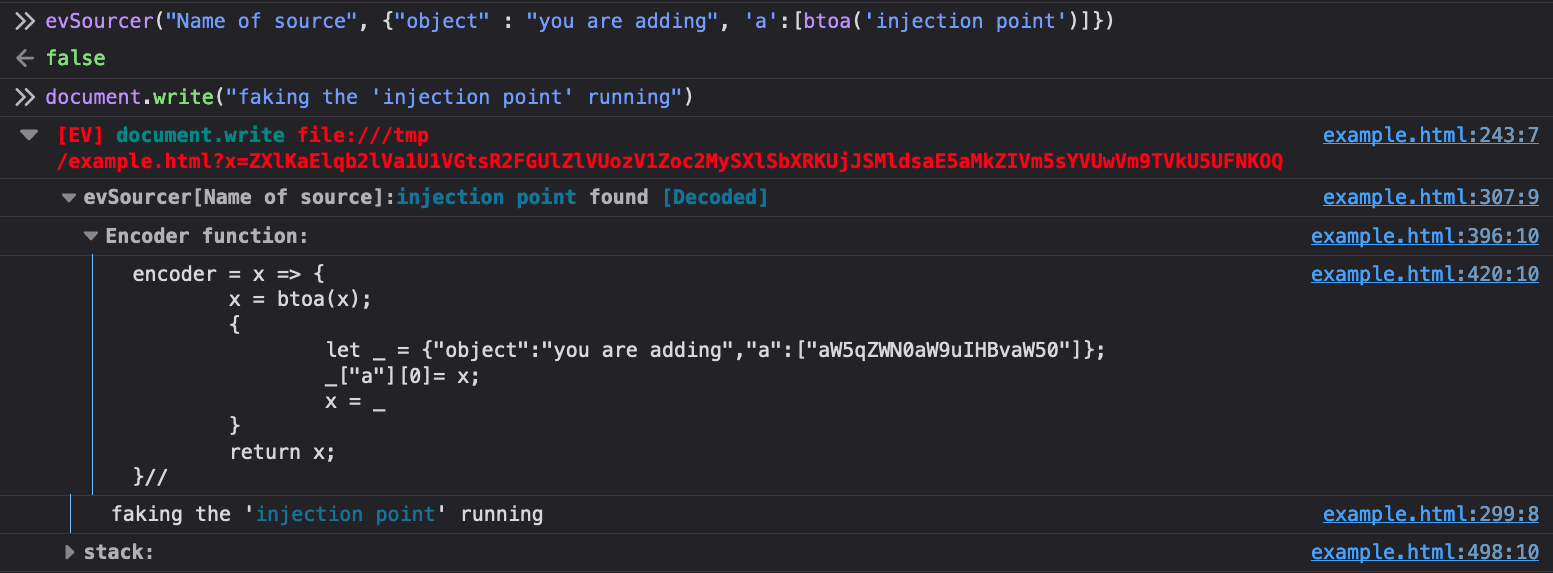
As can be seen, the first argument is what you name the source. The second is
the actual object you want to search sinks. Unless there is a custom encoding
that Eval Villain does not understand you can just put this in raw. There is an
optional third argument that will cause the sourcer to console.debug every
time it’s invoked. This function returns false, so you can use it as a
conditional breakpoint anywhere. For example, you can add this as a conditional
breakpoint that only runs in the post message handler of interest, when
receiving messages from a particular origin as a means of finding if any part
of a message will hit a DOM XSS sink. Using this in the right place can
alleviate SOP restrictions placed on your instrumentation code.
Just like the evSourcer there is an evSinker. I rarely use this, so there
is no “enable/disable” entry for this in the popup menu. It accepts a sink name
and a list of arguments and just acts like your own sink. It also returns false
so it can easily be used in conditional breakpoints.

Writing your own instrumentation is a powerful skill for vulnerability research. Sometimes, it only takes a couple of lines of JavaScript to tame a giant gully codebase. By knowing how this works, you can have better insight into what tools like Eval Villain and DOM invader can and can’t do. Whenever necessary, you can also adapt your own code when a tool comes up short.

Greetings, folks! Today, we’re thrilled to introduce you to our latest tool: Session Hijacking Visual Exploitation, or SHVE. This open-source tool, now available on our GitHub, offers a novel way to hijack a victim’s browser sessions, utilizing them as a visual proxy after hooking via an XSS or a malicious webpage. While some exploitation frameworks, such as BeEF, do provide hooking features, they don’t allow remote visual interactions.
SHVE’s interaction with a victim’s browser in the security context of the user relies on a comprehensive design incorporating multiple elements. These components, each fulfilling a specific function, form a complex, interconnected system that allows a precise and controlled session hijacking. Let’s take a closer look at each of them:
VictimServer: This component serves the malicious JavaScript. Furthermore, it establishes a WebSocket connection to the hooked browsers, facilitating the transmission of commands from the server to the victim’s browser.
AttackerServer: This is the connection point for the attacker client. It supplies all the necessary information to the attacker, such as the details of the different hooked sessions.
Proxy: When the client enters Visual or Interactive mode, it connects to this proxy. The proxy, in turn, uses functionalities provided by the VictimServer to conduct all requests through the hooked browser.
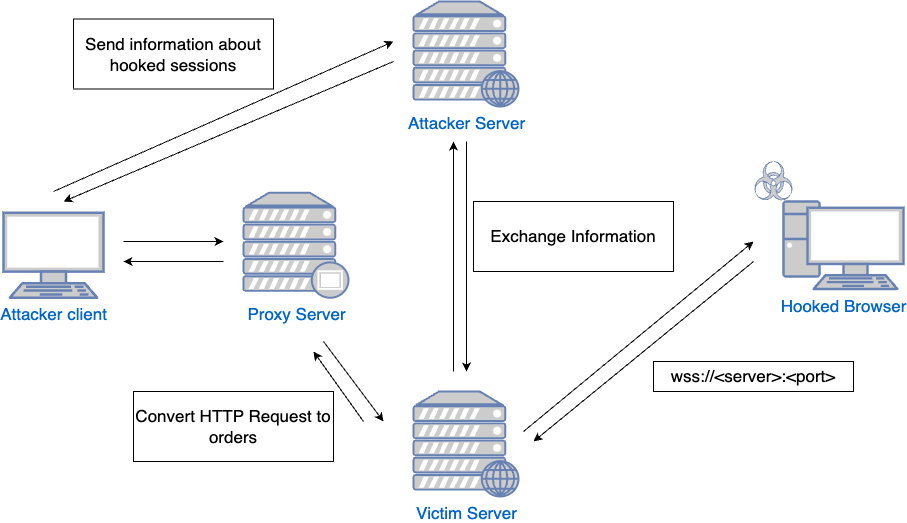
The tool comes with two distinctive modes - Visual and Interactive - for versatile usage.
Visual Mode: The tool provides a real-time view of the victim’s activities. This is particularly useful when exploiting an XSS, as it allows the attacker to witness the victim’s interactions that otherwise might be impossible to observe. For instance, if a victim accesses a real-time chat that isn’t stored for later review, the attacker could see this live interaction.
Interactive Mode: This mode provides a visual gateway to any specified web application. Since the operations are carried out using the victim’s security context via the hooked browser, detection from the server-side becomes significantly more challenging. Unlike typical XSS or CORS misconfigurations exploitation, there’s no need to steal information like Cookies or Local Storage. Instead, the tool uses XHR requests, ensuring CSRF tokens are automatically sent, as both victim and attacker view the same HTML.
We’ve tried to make the installation process as straightforward as possible. You’ll need to have Node.js and npm installed on your system. After cloning our repository, navigate to the server and client directories to install their respective dependencies. Start the server and client, follow the initial setup steps, and you’re ready to go! For the full installation guide, please refer to the README file.
We’ve recorded a video showcasing these modes and demonstrating how to exploit XSS and CORS misconfigurations using one of the Portswigger’s Web Security Academy labs. Here is how SHVE works:
We look forward to your contributions and insights, and can’t wait to see how you’ll use SHVE in your red team engagements. Happy hacking!
Thanks to Michele Orru and Giuseppe Trotta for their early-stage feedback and ideas.
We’re thrilled to pull back the curtain on the latest iteration of our widely-used Burp Suite extension - InQL. Version 5 introduces significant enhancements and upgrades, solidifying its place as an indispensable tool for penetration testers and bug bounty hunters.

The cybersecurity landscape is in a state of constant flux. As GraphQL adoption surges, the demand for an adaptable, resilient testing tool has become paramount. As leaders in GraphQL security, Doyensec is proud to reveal the most recent iteration of our open-source testing tool - InQL v5.x. This isn’t merely an update; it’s a comprehensive revamp designed to augment your GraphQL testing abilities.
Our journey with InQL started on the Jython platform. However, as time went by, we began to experience the limitations of Jython - chiefly, its lack of support for Python 3, which made it increasingly difficult to find compatible tooling and libraries. It was clear a transition was needed. After careful consideration, we chose Kotlin. Not only is it compatible with Java (which Burp is written in), but it also offers robustness, flexibility, and a thriving developer community.
We opted to include the entire Jython runtime (over 40 MB) within the Kotlin extension to overcome the challenges of reusing the existing Jython code. Although it wasn’t the ideal solution, this approach allowed us to launch the extension as Kotlin, initiate the Jython interpreter, and delegate execution to the older Jython code.
class BurpExtender: IBurpExtender, IExtensionStateListener, BurpExtension {
private var legacyApi: IBurpExtenderCallbacks? = null
private var montoya: MontoyaApi? = null
private var jython: PythonInterpreter? = null
private var pythonPlugin: PyObject? = null
// Legacy API gets instantiated first
override fun registerExtenderCallbacks(callbacks: IBurpExtenderCallbacks) {
// Save legacy API for the functionality that still relies on it
legacyApi = callbacks
// Start embedded Python interpreter session (Jython)
jython = PythonInterpreter()
}
// Montoya API gets instantiated second
override fun initialize(montoyaApi: MontoyaApi) {
// The new Montoya API should be used for all of the new functionality in InQL
montoya = montoyaApi
// Set the name of the extension
montoya!!.extension().setName("InQL")
// Instantiate the legacy Python plugin
pythonPlugin = legacyPythonPlugin()
// Pass execution to legacy Python code
pythonPlugin!!.invoke("registerExtenderCallbacks")
}
private fun legacyPythonPlugin(): PyObject {
// Make sure UTF-8 is used by default
jython!!.exec("import sys; reload(sys); sys.setdefaultencoding('UTF8')")
// Pass callbacks received from Burp to Python plugin as a global variable
jython!!.set("callbacks", legacyApi)
jython!!.set("montoya", montoya)
// Instantiate legacy Python plugin
jython!!.exec("from inql.extender import BurpExtenderPython")
val legacyPlugin: PyObject = jython!!.eval("BurpExtenderPython(callbacks, montoya)")
// Delete global after it has been consumed
jython!!.exec("del callbacks, montoya")
return legacyPlugin
}
Our switch to Kotlin also solved another problem. Jython extensions in Burp
Suite are typically a single .py file, but the complexity of InQL necessitates a
multi-file layout. Previously, we used the
stickytape library to compress the
Python code into a single file. However, stickytape introduced subtle bugs and
inhibited access to static files. By making InQL a Kotlin extension, we can now
bundle all files into a JAR and access them correctly.
A significant milestone in our transition journey involved refactoring the core portion of InQL that handles GraphQL schema parsing. The result is GQLSpection - a standalone library compatible with Python 2/3 and Jython, featuring a convenient CLI interface. We’ve included all GraphQL code examples from the GraphQL specification in our test cases, ensuring comprehensive coverage.
As an added advantage, it also replaces the standalone and CLI modes of the previous InQL version, which were removed to streamline our code base.

Our clients rely heavily on cutting-edge technologies. As such, we frequently have the opportunity to engage with real-world GraphQL deployments in many of our projects. This rich exposure has allowed us to understand the challenges InQL users face and the requirements they have, enabling us to decide which features to implement. In response to these insights, we’ve introduced several significant features in InQL v5.0 to support more effective and efficient audits and investigations.
One standout feature in this version is ‘Points of Interest’. Powered by GQLSpection and with the initial implementation contributed by @schoobydrew, this is essentially a keyword scan equipped with several customizable presets.
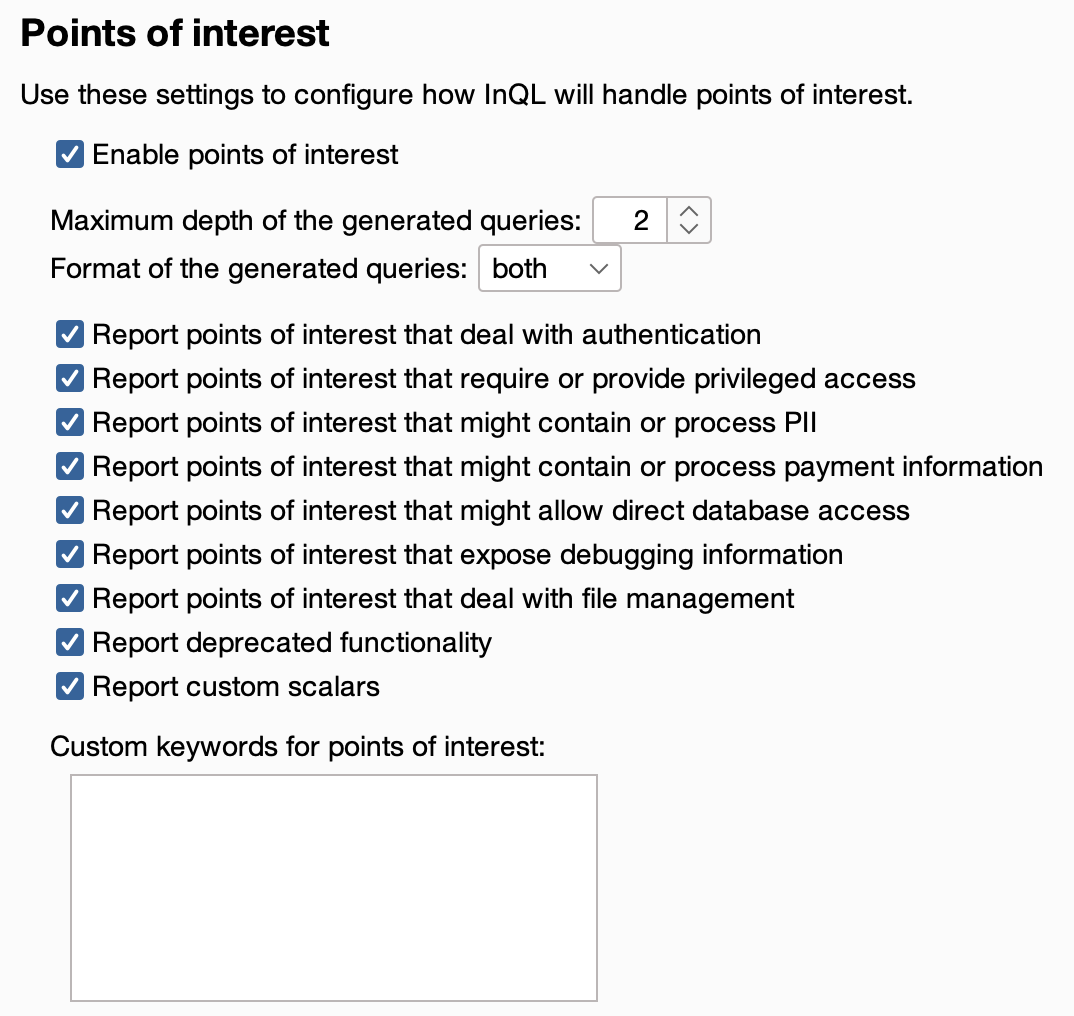
The Points of Interest scan proves exceptionally useful when analyzing extensive schemas with over 50 queries/mutations and thousands of fields. It produces reports in both human-readable text and JSON format, providing a high-level overview of the vast schemas often found in modern apps, and aiding pentesters in swiftly identifying sensitive data or dangerous functionality within the schema.
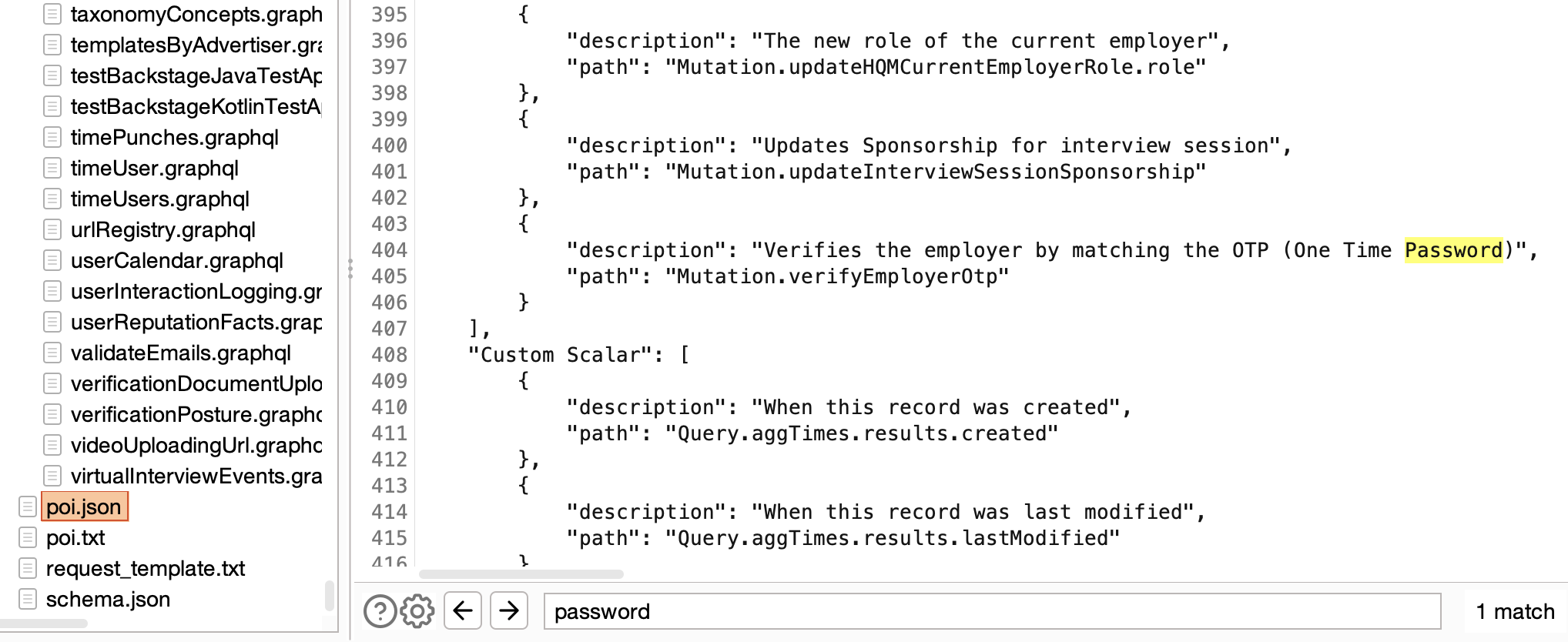
One of my frustrations with earlier versions of the tool was the lack of useful error messages when the parser broke on real-world schemas. So, I introduced configurable logging. This, coupled with the fact that parsing functionality is now handled by GQLSpection, has made InQL v5.0 much more reliable and user-friendly.
Another important addition to InQL are the annotations. Prior to this, InQL only generated the bare minimum query, necessitating the use of other tools to deduce the correct input format, expected values, etc. However, with the addition of inline comments populated with content from ‘description’ fields from the GraphQL schema or type annotations, InQL v5.0 has become much more of a standalone tool.
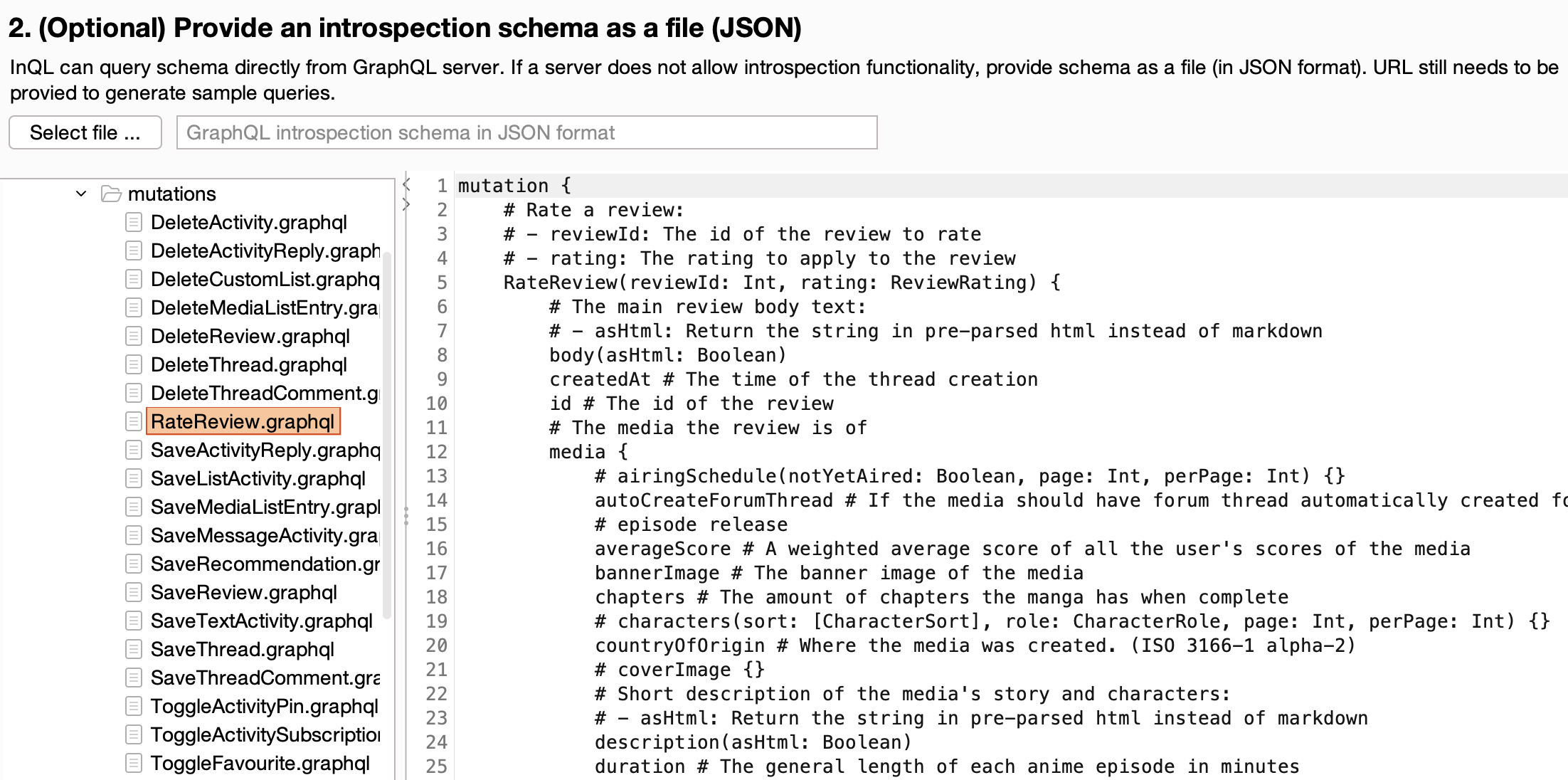
There is a trade-off here: while the extensive annotations make InQL more usable, they can sometimes make it hard to comprehend and navigate. We’re looking at solutions for future releases to dynamically limit the display of annotations.
Our roadmap for InQL is ambitious. Having said that, we are committed to reintroduce features like GraphiQL and Circular Relationship Detection, achieving full feature parity with v4.
As GraphQL continues to grow, ensuring robust security is crucial. InQL’s future involves addressing niche GraphQL features that are often overlooked and improving upon existing pentesting tools. We look forward to sharing more developments with the community.
InQL is not just a tool, it’s a project – a project that invites the contributions of those who are passionate about cybersecurity. We’re actively seeking students and developers who would like to contribute to InQL or do GraphQL-adjacent security research. This is an opportunity to work with experts in GraphQL security, and play a part in shaping the future of InQL.
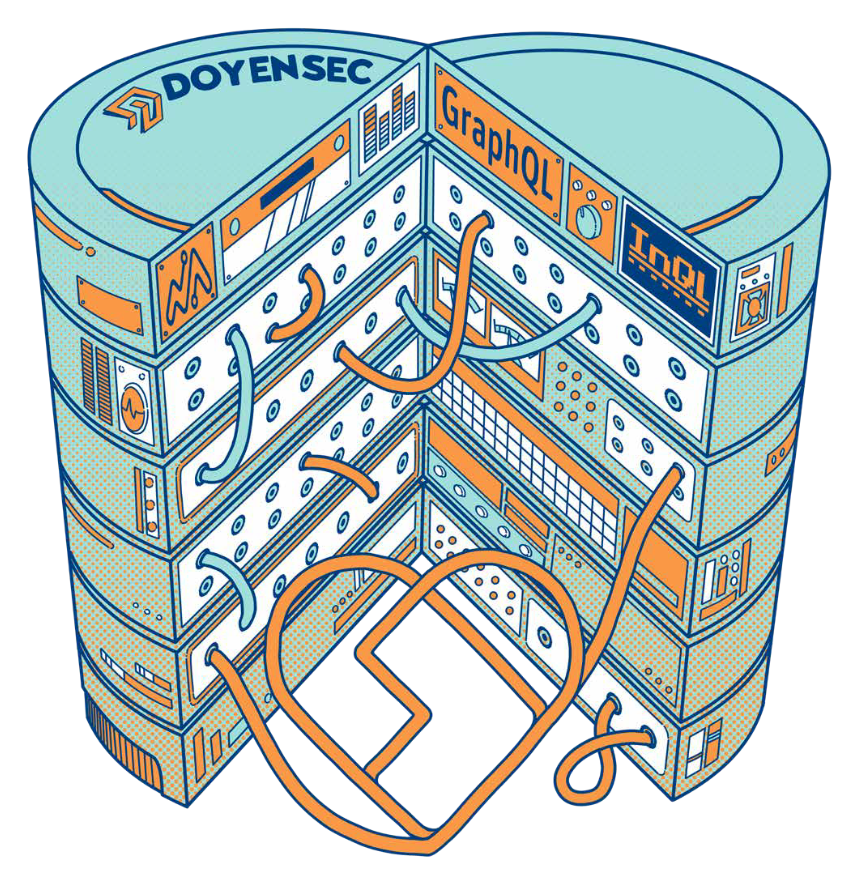
InQL v5.x is the result of relentless work and an unwavering commitment to enhancing GraphQL security. We urge all pentesters, bug hunters, and cybersecurity enthusiasts working with GraphQL to try out this new release. If you’ve tried InQL in the past and are looking forward to enhancements, v5.0 will not disappoint.
At Doyensec, we’re not just developing a tool, we’re pushing the boundaries of what’s possible in GraphQL security. We invite you to join us on this journey, whether as a user, contributor, or intern.
Happy Hacking!
Back in 2019, we were lucky enough to take part in the newly-launched Huawei mobile bug bounty. For that, we decided to research Huawei’s Themes.
The Themes Manager allows custom themes on EMUI devices to stylize preferences, and the customization of lock screens, wallpapers and icons. Processes capable of making these types of system-wide changes need to have elevated privileges, making them valuable targets for research as well as exploitation.
When it comes to implementing a lockscreen on EMUI, there were three possible engines used:
When installing a theme, the SystemUI.apk verifies the signature of the application attempting to make these changes against a hardcoded list of trusted ones. From what we observed, this process seems to have been implemented properly, with no clear way to bypass the signature checks.
That said, we discovered that when com.huawei.ucdlockscreen was used, it loaded additional classes at runtime. The signatures of these classes were not validated properly, nor were they even checked. This presented an opportunity for us to introduce our own code.
Taking a look at the structure of the theme archive files (.hwt), we see that the unlock screen elements are packaged as follows:
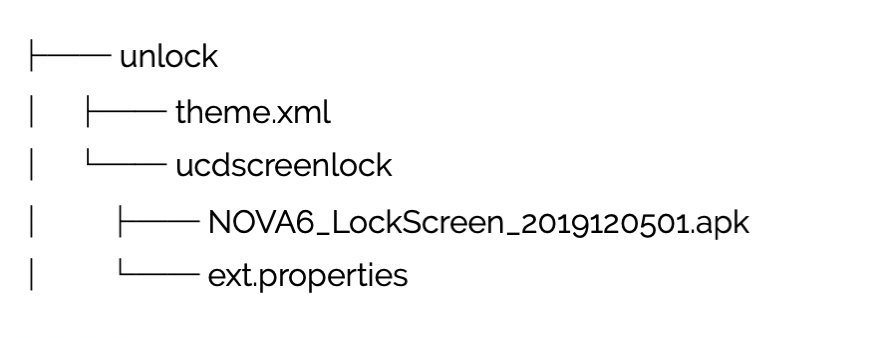
Looking in the unlock directory, we saw the theme.xml file, which is a manifest specifying several properties. These settings included the dynamic unlock engine to use (ucdscreenlock in our case) and an ext.properties file, which allows for dynamic Java code loading from within the theme file.
Let’s look at the file content:

This instructs the dynamic engine (com.huawei.ucdlockscreen) to load com.huawei.nova.ExtensionJarImpl at runtime from the NOVA6LockScreen2019120501.apk. Since this class is not validated, we can introduce our own code to achieve arbitrary code execution. What makes this even more interesting is that our code will run within a process of a highly privileged application (com.huawei.android.thememanager), as shown below.

Utilizing the logcat utility, we can see the dynamic loading process:
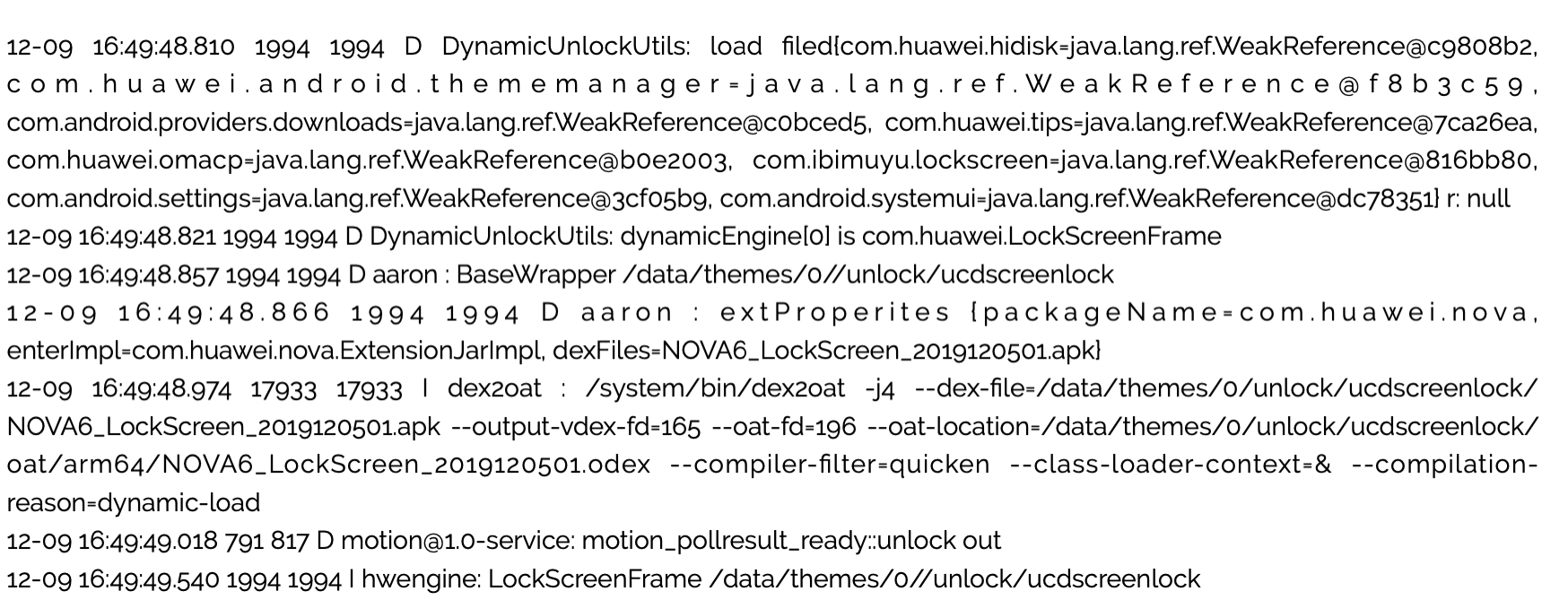
This vulnerability was confirmed via direct testing on EMUI 9.1 and 10, but appears to impact the current version of EMUI with some limitations*.

As previously mentioned, this results in arbitrary code execution using the PID of a highly privileged application. In our testing, exploitation resulted in obtaining around 200 Android and Huawei custom permissions. Among those were the permissions listed below which could result in total compromise of the device’s user data, sensitive system data, any credentials entered into the system and the integrity of the system’s environment.
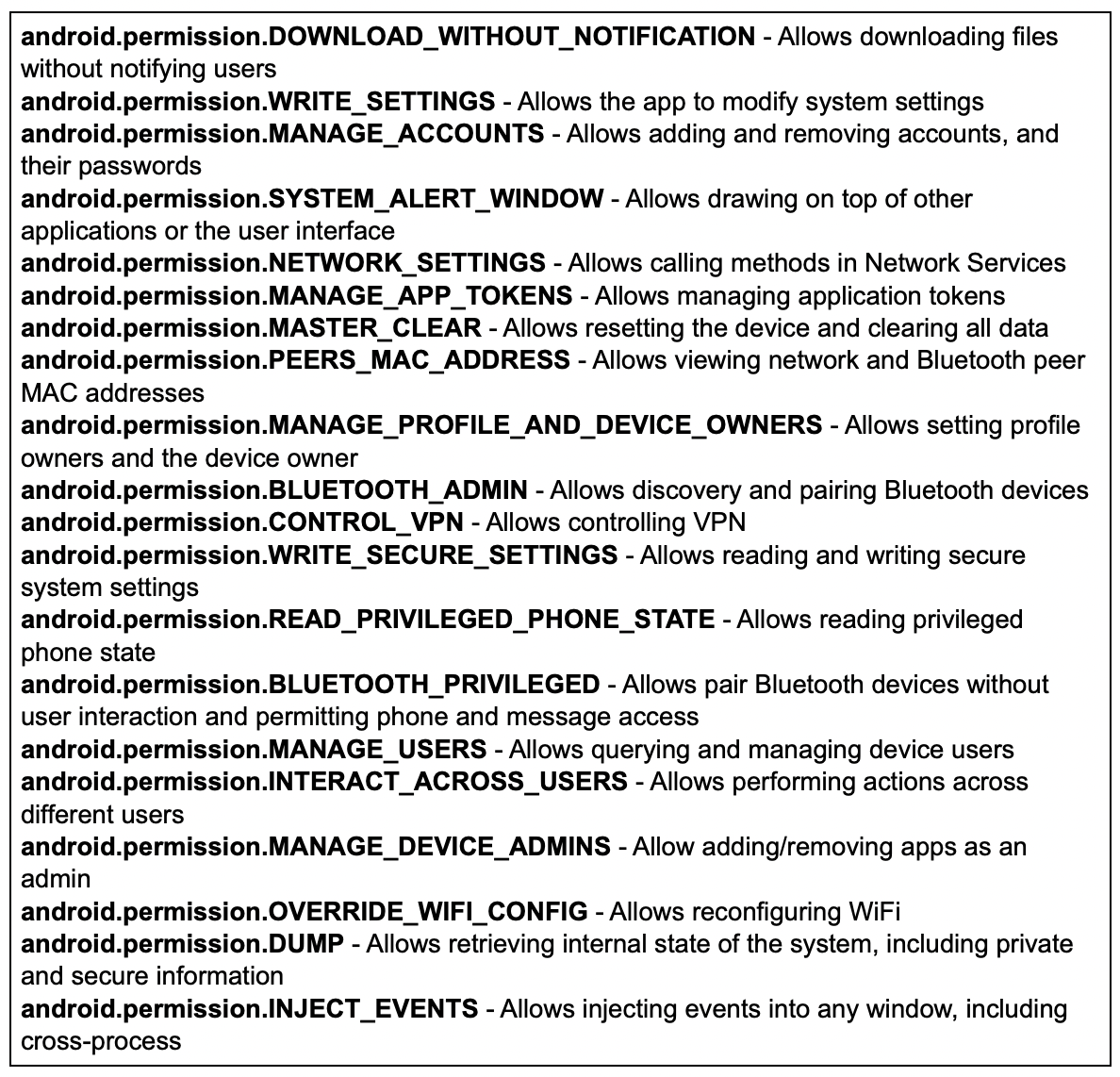
Considering that the application can send intents requiring the huawei.android.permission.HW_SIGNATURE_OR_SYSTEM permission, we believe it is possible to leverage existing system functionalities to obtain system level code execution. Once achieved, this vulnerability has great potential as part of a rooting chain.
This issue can be reliably exploited with no technical impediments. That said, exploitation requires installing a custom theme. To accomplish this remotely, user interaction is required. We can conceive of several plausible social engineering scenarios which could be effective or perhaps use a second vulnerability to force the download and installation of themes.
Firstly, it is possible to gift themes to other users, so a compromised trusted contact could be leveraged (or spoofed) to convince a victim to accept and install the malicious theme.
As an example, the following URL will open the theme gift page: hwt://www.huawei.com/themes?type=33&id=0&from=AAAA&channelId=BBB
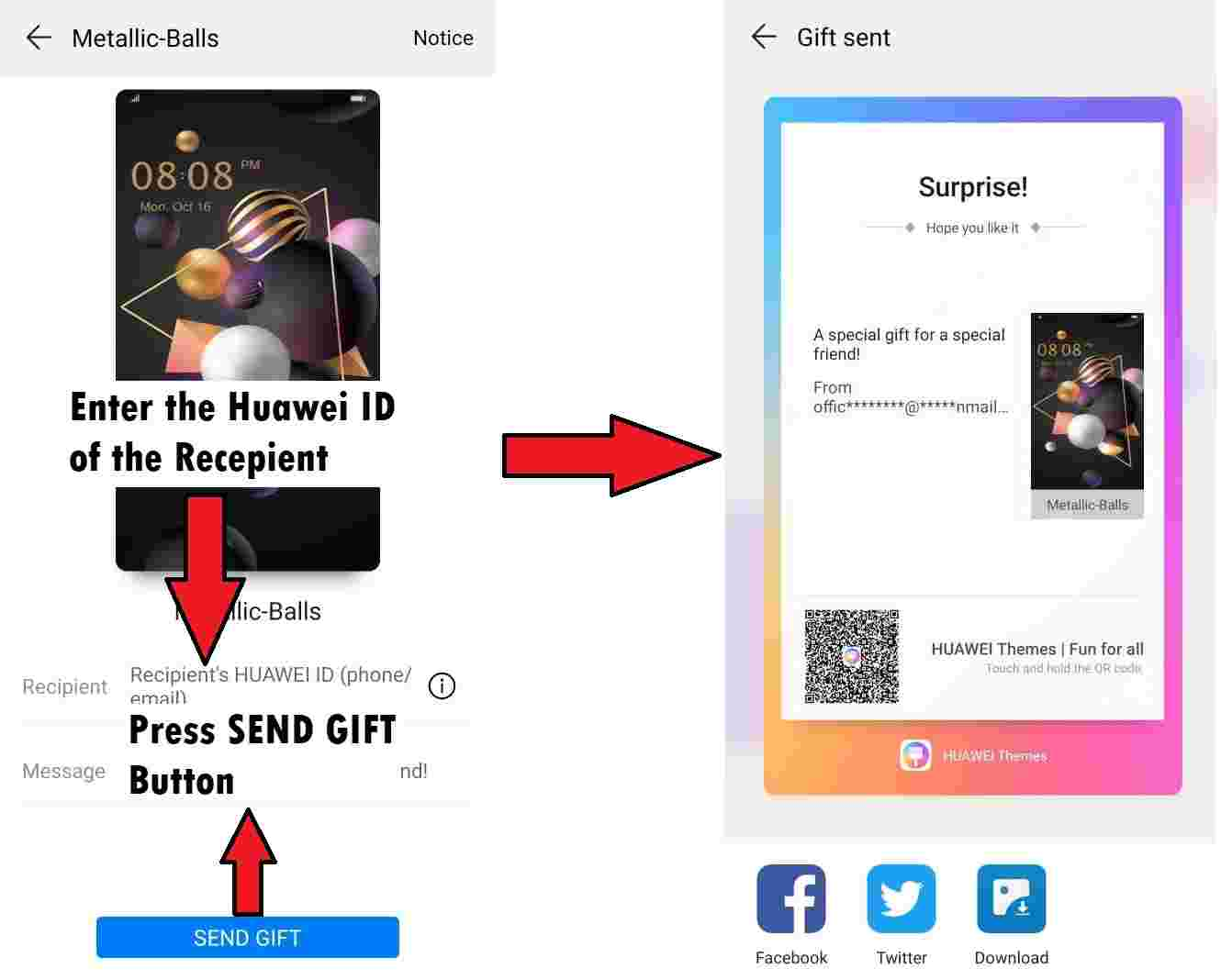
Secondly, an attacker could publish a link or QR code pointing to the malicious theme online, then convince a victim into triggering the HwThemeManager application via a deep link using the hwt:// scheme.
To be fair, we must acknowledge that Huawei has a review process in place for new themes and wallpapers, which might limit the use of live themes exploiting this vulnerability.
Huawei released an update for HwThemeManager on February 24, 2022 (internally tracked as HWPSIRT-2019-12158) stating this was resolved. Despite this, we believe the issue was actually resolved in ucdlockscreen.apk (com.huawei.ucdlockscreen version 3 and later).
This is an important distinction, because the latest version of the ucdlockscreen.apk is installed at runtime by HwThemeManager, after applying a theme that requires such an engine. Even on a stock phone (both EMUI 9,10 and latest 12.0.0.149), an attacker with physical access can uninstall the latest version and install the old vulnerable version since it is properly signed by Huawei.
Without further mitigations from Huawei, an attacker with physical access to the device can still leverage this vulnerability to gain system privileged access on even the latest devices.
After a few hours of reverse engineering the fix introduced in the latest version of com.huawei.ucdlockscreen (version 4.6), we discovered an additional bypass impacting the EMUI 9.1 release. This issue doesn’t require physical access and can again trigger the same exploitable condition.
During theme loading, the latest version of com.huawei.ucdlockscreen checks for the presence of a /data/themes/0/unlock/ucdscreenlock/error file. Since all of the files within /data/themes/0/ are copied from the provided theme (.hwt) file they can all be attacker-controlled.
This file is used to check the specific version of the theme. An attacker can simply embed an error file referencing an older version, forcing legacy theme support. When doing so, an attacker would also specify a fictitious package name in the ext.properties file. This combination of changes in the malicious .hwt file bypasses all the required checks - making the issue exploitable again on the latest EMUI9.1, with no physical access required. At the time of our investigation, the other EMUI major versions appear to implement signature validation mechanisms to mitigate this.
This issue was disclosed on Dec 31, 2019 according to the terms of the Huawei Mobile Bug Bounty, and it was addressed by Huawei as described above. Additional research results were reported to Huawei on Sep 1, 2021. Given the time that has elapsed from the original fix and the fact that we believe the issue is no longer remotely exploitable, we have decided to release the details of the vulnerability.
At the time of writing this post (April 28th, 2023), the issue is still exploitable locally on the latest EMUI (12.0.0.149) by force-loading the vulnerable ucdlockscreen.apk. We have decided not to release the vulnerable version of ucdlockscreen.apk as well as the malicious theme proof-of-concept. While the issue is no longer interesting to attackers, it can still benefit the rooting community and facilitate the work of security researchers in identifying issues within Huawei’s EMUI-based devices.
While the vulnerability is technically interesting by itself, there are two security engineering learning lessons here. The biggest takeaway is clearly that while relying on signature validation for authenticating software components can be an effective security measure, it must be thoroughly extended to include any dynamically loaded code. That said, it appears Huawei no longer provides bootloader unlock options (see here) making rooting more complicated and expensive. It remains to be seen if this bug is ever used as part of a chain developed by the rooting community.
A secondary engineering lesson is to ensure that when we design backwards compatibility mechanisms, we should assume that there may be older versions that we want to abandon.
This research was made possible by the Huawei Mobile Phone Bug Bounty Program. We want to thank the Huawei PSIRT for their help in handling this issue, the generous bounty and the openness to disclose the details.